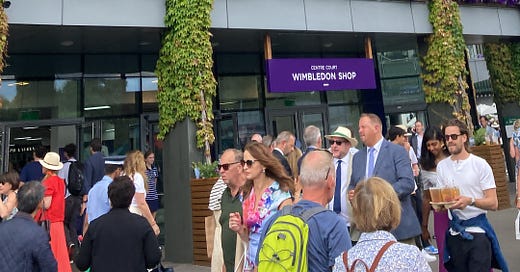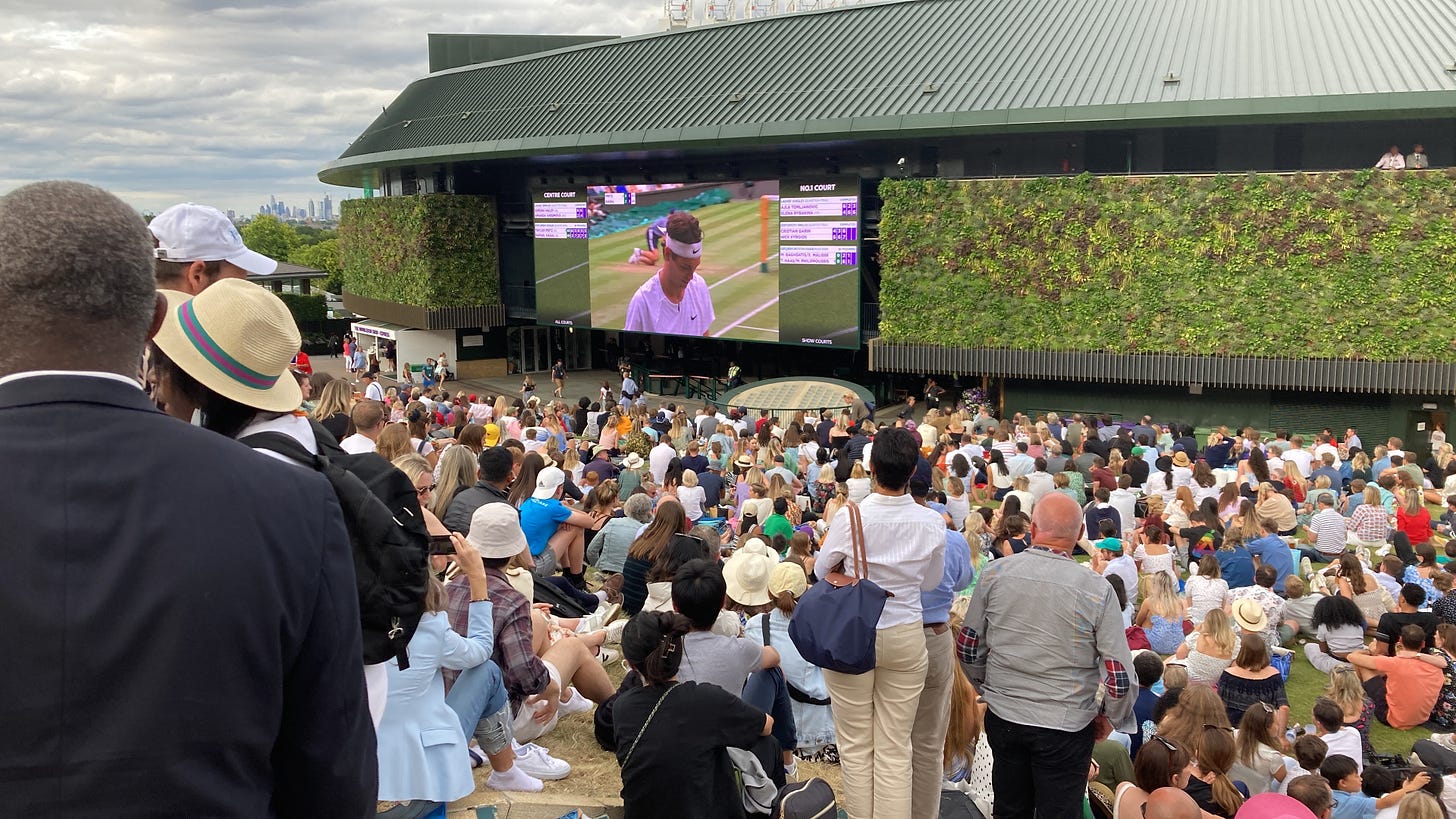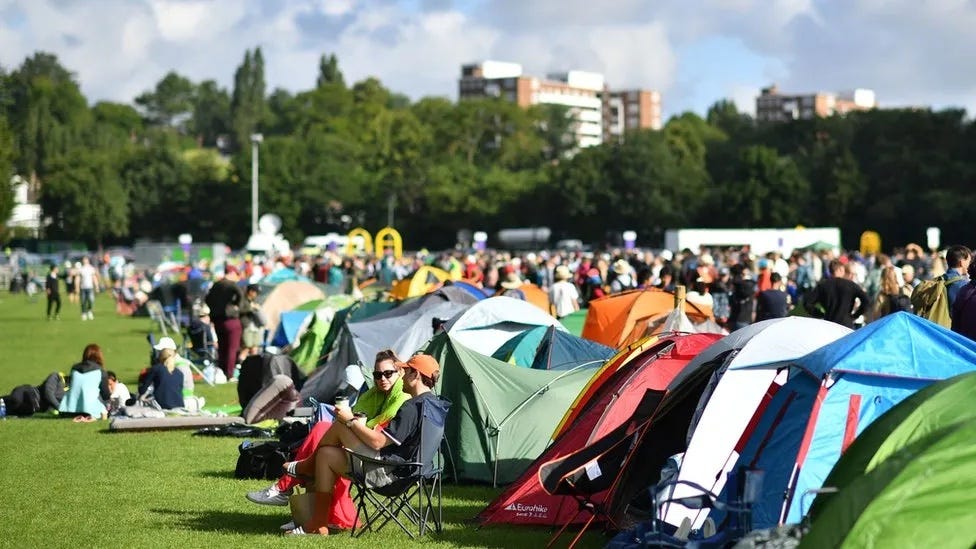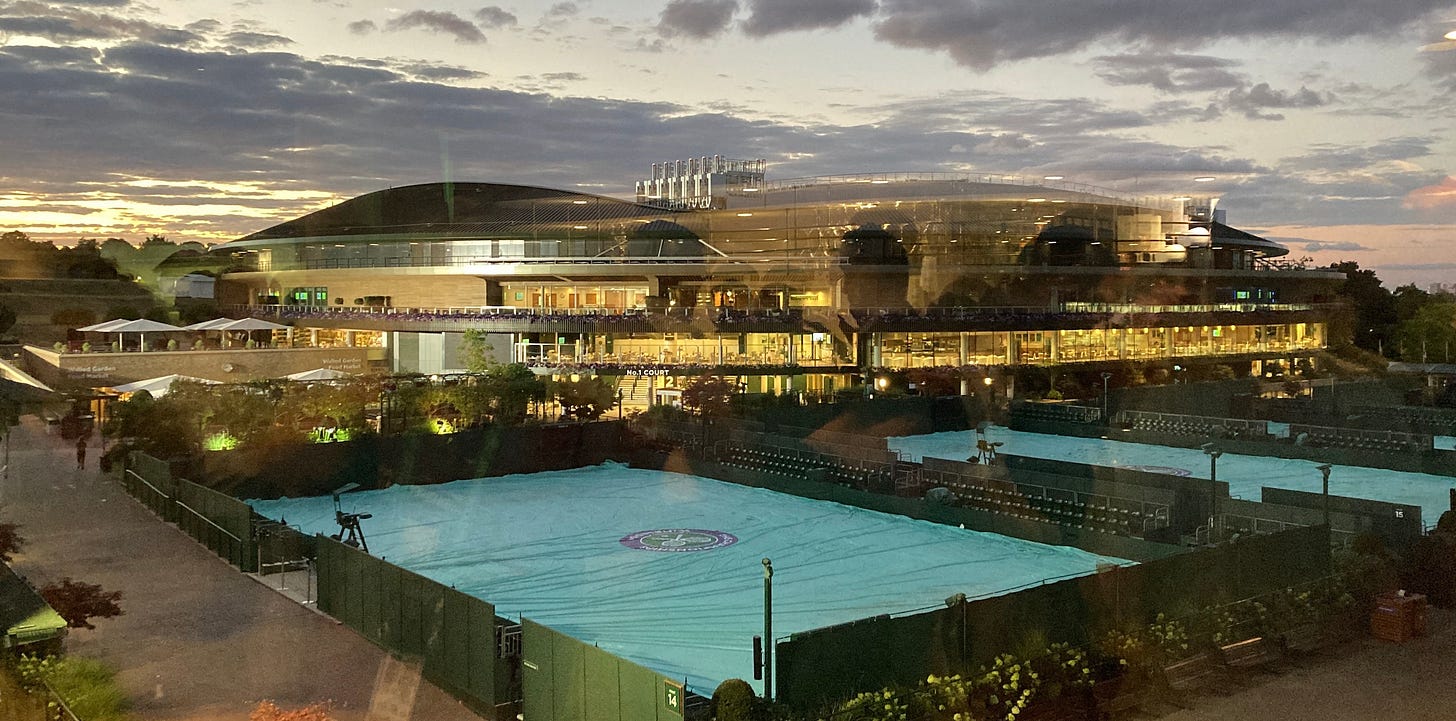Wimbledon uncovered #1: The 10 secrets of the best-organised event in sport
The oldest Grand Slam tennis tournament dates back to 1877, and remains the crème de la crème event on the calendar, and among the best in all of sport. Here's why.
🎾 THE 2024 Championships get underway today at Wimbledon, where the best tennis players in the world will contest 20 different events over the next two weeks, from the ladies’ and gentlemen’s singles to the mixed invitational doubles.
More than half a million fans will pass through the gates at the All England Club (AELTC) across 14 days of competition, with £50m in prize money up for grabs at the Jewel-in-the-Crown event of Britain’s sporting summer.
Wimbledon is the best organised and most democratic major sports tournament in the country, and perhaps the world. And yes, I know that’s some claim, but the point of this piece is to try to detail exactly why.
It’s not merely a cherished sporting fortnight, popular worldwide, but a rip-roaring financial success, profitable enough every year to give tens of millions to tennis development and other good causes. It’s also innovative, and run by people with tremendous foresight, more of which later.
If you’ve ever been to Wimbledon, then most likely you’ll already know what a brilliant day out it can be, whether you’re on Centre Court watching a final, or up on the hill, or over at the Aorangi practice courts where you can watch the top stars limber up before they play.
That hill’s formal name is The Aorangi Terrace, so-called because until 1981, the site was the home of the London New Zealand Rugby Club, and in the Maori language, Aorangi means ‘Cloud in the sky’.
The hill has most commonly been known as Henman Hill since the late 90s, when huge crowds gathered there to watch epic Tim Henman matches. He was a four-time Wimbledon semi-finalist between 1998 and 2002, losing each of those to the eventual champions; to Pete Sampras (in 1998 and 1999), to Goran Ivanišević (2001) and to Lleyton Hewitt (2002).
That Ivanišević semi-final took three days to complete due to rain, and as a reporter covering Wimbledon in 2001, I spent many soggy hours up on that hill, canvassing fans’ views on whether Henman could turn his lead of two-sets-to-one into a Wimbledon final appearance. They thought he could, obviously, but it wasn’t to be.
The hill has had umpteen other alliterative nicknames since then, all referencing British contestants. It’s been Rusedski Ridge, Murray Mound and Raducanu Rise among others. Will this be the year for it to become Draper Drumlin?
The first time I went to Wimbledon was in 1988 and no doubt that influenced my admiration for the event, although as someone who later worked in sport, and researched and wrote about the business of sport, there’s more to admire than a good day out.
We hitch-hiked in 1988, two teenage school friends, from junction 25 of the M1 with our crappy sign made of cardboard, saying only ‘Wimbledon’ and with a badly drawn tennis racket. We got a lift quickly, all the way to the Brent Cross shopping centre, then took the tube from north London to Southfields.
The Wimbledon queue was already a famous phenomenon. You could turn up ticketless the day before a match and sleep on the street outside the main gate, and the first 1,000 people in that queue could get prime seats the next day on either Centre Court or No.1 Court, and the next few thousand at least would be guaranteed ground passes for the day.
These days, the queue is highly organised and you can camp in Wimbledon Park across the road, with access nearby to loos and facilities, and food vans selling refreshments.
In 1988 we were literally on the pavement across the road from the main gate, pitching a dome tent we didn’t need because it was so warm, and with whatever food and drink we’d bought from the shop near Southfields station, 15 minutes walk away.
It was the evening of Tuesday June 28, 1988, and we were among the first 100 people admitted the next morning. We bought Centre Court tickets, close to the front, not far from the umpire’s chair, in a prime location, for £16 each.
It was blazingly hot and sunny, and of course we didn’t have any sunscreen, not that we cared. The main match on Centre Court on June 29 was the men’s quarter-final between Boris Becker and Pat Cash.
Cash was the men’s single’s title holder, having beaten Ivan Lendl in the 1987 final before embarking on the first ever champions climb up into the stands to hug family and friends. Numerous others have copied him since.
Becker, a German, was already a well-established sporting hero in Britain, having won Wimbledon in 1985, aged 17, making him the youngest men’s singles winner then or since, and having won again in 1986 at 18.
This was his fifth Wimbledon tournament. He first played in 1984 aged 16, when he made the third round. He beat Cash in straight sets the day we went and we relished every moment as we roasted in the sun.
Our original plan was to leave Wimbledon and hitch to the south of France, but we only got as far as a Calais campsite, and several days of torrential rain. After listening on our transistor radio to Steffi Graf win the women’s singles against Martina Navratilova on that 1988 Saturday - inside that dome tent, now threatening to collapse - we packed up and went home.
I’ve been back to Wimbledon many times since, including covering every day of every tournament between 1999 and 2017. There’s a hotel in East Putney where I have spent the equivalent of more than a year of my life.
Sporting Intelligence’s special Wimbledon series this week, running from today until Thursday, is all about the tennis, or rather the tennis and the fabulous circus around it.
We start today with the secrets of its phenomenal commercial success before moving on to the intrigue of unmasking a match-fixing doper on Wimbledon’s hallowed lawns (tomorrow), followed by a definitive breakdown of who ranks as the all-time best of the best in SW19 (Wednesday), and then the revealing findings of what you, the readers, consider the greatest ever matches at Wimbledon (Thursday). Read more about that, and how to have your say, here.
Without further ado, we’ll move on to the 10 secrets of Wimbledon’s success, starting with it being the most democratic major sports event in the world.








